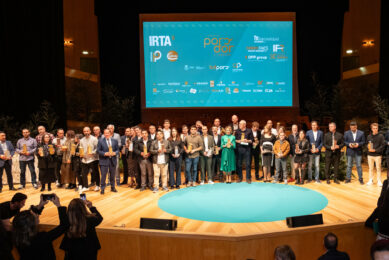Summer Formulas
Summer is here! I don’t know about you, but here in Spain we have just started enjoying the summer…It is already 33º Celsius under shade! So, it’s about time we start ‘summerising’ the pig business. There are many things that can be done through changes in facilities and management, but today we shall focus on nutritional aspects. Indeed, this has been my daily theme for the past couple weeks!
So, let’s start from the beginning…
©
Pigs don’t like heat! It makes them uncomfortable, just like humans! Things are even worst for pigs as they have dormant sweat glands, making them suffer even more. That’s one of the reasons why pigs would be wallowing in a mud hole given the choice!
©
The process of eating, digesting, and metabolising food generates heat proportionally to the level of feed intake. So, it is natural for pigs to avoid eating when external temperatures make such activity highly unpleasant. Hence, the problem of reduced feed intake during the summer months, which invariably leads to reduced performance in both growing and breeding pigs. Fortunately, there are a few steps we can take to overcome this problem through feed (re)formulation. Below is but a very brief list:
©
1.©Increase dietary energy
This is achieved with the use of oils and fats, either as such, or through full-fat soybeans (or other oil-rich legumes) and dry fat (fat sprayed on a carrier). Ideally, the increase in dietary energy should be proportional to the expected drop in feed intake, but as feed intake can easily drop even by 50% during the most hot season, such an increase in dietary energy is obviously unfeasible. It is suggested to increase dietary energy by 1 or even 2 MJ NE/kg complete feed. The exact level depends on feed manufacturing capabilities and of course the current energy level in feed.
©
2.©Reduce dietary fiber
Fiber, among all ‘nutrients’, is the one generating the most heat while being digested and metabolised. Thus, reducing crude fiber specifications to bare minimum levels during summer is a sound practice. But, it is not that straightforward: not enough fiber and constipation becomes a problem. Here, a better balance of fiber sources is required to ensure gastric motility without overbearing the formulation with fiber-derived energy. Also, chemical laxatives can be used with great results, and again this is subject to the actual formulation being used. In general, a drop of 1% point in crude fiber content is quite feasible, but certainly more can be achieved under proper conditions.
©
3.©Reduce crude protein
Excess ingested protein is deaminated by the organism by spending a great amount of energy, which naturally ends up as heat. Thus, excess dietary protein during summer is contributing to discomfort and reduced feed intake. By carefully matching dietary amino acid specifications to actual animal requirements (taking into account farm-specific circumstances) it is possible to reduce the need for excess protein (to cover all amino acid needs) and even make the diets actually cheaper (never a bad thing!). In the process, even some energy previously used for deamination is now diverted to so much needed productive purposes. To this end, the use of crystalline amino acids is a great help in summer formulas. Reducing dietary crude protein by more than 2% points should only be done by highly qualified nutritionists as this might expose the formulas to severe imbalances in amino acids, which otherwise are routinely considered non-problematic.
©
4.©Additives
There is a number of ‘additives’, or rather compounds that can enhance the resistance to heat stress. We will name no names here, following our long tradition of keeping this blog trade-name free) but your nutritionist or nutrition supplier should be able to identify them for you.
©
In conclusion, summer formulas should be implemented as soon as temperatures start rising to ensure pigs receive adequate nutrition minimising discomfort from feed-related issues. A careful formulation process should be able not only to yield suitable formulas, but also ones that will probably be quite cheaper than the normal ones!
©











